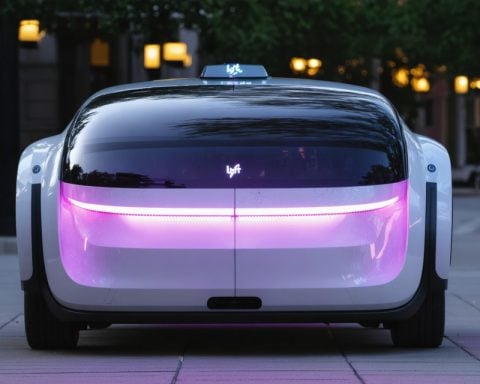Morro Bay’s Energy Transition Faces Roadblocks
In Morro Bay, California, a significant transformation is underway, turning the old PG&E power plant into a state-of-the-art battery energy storage facility. This ambitious project, initiated in collaboration with Texas-based Vistra in 2020, seeks to enhance the city’s commitment to sustainable energy.
However, the proposal hit turbulence last year when local residents voiced worries regarding the safety of battery energy storage technologies. Their concerns have led to increased scrutiny and hesitance regarding the project’s progress.
In October, Vistra announced plans to advance their application to the California Energy Commission (CEC), following a directive from Governor Newsom. This directive allows the CEC to oversee green energy initiatives, bypassing some local governance protocols.
Despite these steps forward, recent events have cast a shadow on Vistra’s ambitions. A fire at one of their facilities in nearby Monterey caused considerable disruption and prompted evacuations, raising alarms among the public and officials.
In response to these incidents, Assembly member Dawn Addis has taken action by proposing legislation to indefinitely pause Vistra’s application. This move aims to ensure that comprehensive safety measures are established at their existing facilities before further advancements are made.
As Morro Bay navigates its energy future, the resolution of these concerns will play a critical role in determining the project’s fate and the broader implications for renewable energy efforts in California.
Broader Implications of Morro Bay’s Energy Transition
The transition of Morro Bay from a traditional power source to a battery energy storage hub epitomizes a crucial shift in how communities approach sustainability in energy production. This move has wider implications for society and culture, particularly in elevating public awareness around renewable energy technologies. As cities explore late-stage fossil fuel dependency, Morro Bay serves as a case study highlighting the potential benefits and fears surrounding such innovations.
In the global economy, successful energy transitions can bolster local industries, encouraging investments in green technology and creating jobs. As cities like Morro Bay take proactive steps towards cleaner energy, there is a ripple effect that promotes a green economy across multiple sectors—from construction and engineering to research and development. Notably, California’s ambitious climate goals compel other states to observe and adapt similar models, potentially accelerating nationwide transitions to sustainable energy.
Additionally, as public sentiment increasingly demands accountability from energy providers, environmental safety measures become paramount. Past incidents, like the fire at Vistra’s Monterey facility, could dictate future regulatory frameworks, potentially leading to stricter oversight of energy storage solutions nationwide.
Looking ahead, the focus on battery storage technology highlights an urgent societal need: a shift not merely in production methods but also in cultural attitudes towards safety and environmental responsibility. This ongoing dialogue will likely shape the trajectory of renewable energy initiatives in the coming years, influencing everything from regulatory policies to community engagement standards.
Unlocking Morro Bay’s Energy Future: Challenges and Innovations Ahead
Morro Bay’s Energy Transition Faces Roadblocks
In the picturesque city of Morro Bay, California, a major transition is taking place as the former PG&E power plant is being transformed into an advanced battery energy storage facility. This significant initiative, which began in collaboration with Texas-based Vistra in 2020, aims to strengthen the city’s commitment to sustainable energy solutions. However, the journey has encountered numerous obstacles that raise important questions about safety and regulatory processes.
Current Challenges and Community Concerns
Local residents have expressed mounting concerns over the safety of battery energy storage technologies, particularly following recent incidents. These apprehensions have prompted increased scrutiny and hesitation regarding the project’s progression. The concern is not unfounded; battery storage systems can pose risks if not designed, installed, and maintained properly, which has led to broader discussions about safety standards in renewable energy projects.
Regulatory Developments
In October, Vistra took proactive steps by announcing its intention to advance its application to the California Energy Commission (CEC). This move follows a directive from Governor Gavin Newsom, empowering the CEC to oversee green energy initiatives, thereby allowing the state to expedite approvals while potentially bypassing local governance constraints.
However, Vistra’s path to realization has been further complicated by a recent fire at one of its facilities in nearby Monterey. This incident raised alarms within the community, leading to evacuations and heightening local fears about the safety of such initiatives.
Legislative Action and Safety Measures
In light of these events, Assembly member Dawn Addis has proposed legislation that seeks to indefinitely pause Vistra’s application with the CEC. This measure is intended to ensure that robust safety protocols are thoroughly established at existing battery energy storage facilities before any new initiatives can commence. Such actions reflect the necessary balance between advancing renewable energy and ensuring public safety—a dialogue that has become increasingly critical as California pushes forward with its ambitious climate goals.
Pros and Cons of Battery Energy Storage
Pros:
– Sustainability: Battery energy storage systems can effectively store renewable energy, reducing reliance on fossil fuels.
– Grid Stability: They have the potential to enhance grid reliability by providing backup power during peak demand periods.
– Innovative Technology: Advances in battery technology can lead to cleaner, more efficient energy solutions.
Cons:
– Safety Concerns: Issues related to thermal runaway, fires, and environmental hazards remain significant challenges.
– High Initial Costs: The upfront investment for advanced battery technology can be prohibitive.
– Regulatory Hurdles: Navigating regulatory landscapes can delay project timelines and increase complexity.
Future Insights and Predictions
As Morro Bay navigates its energy future, the resolution of these safety and regulatory concerns will significantly influence not only the local project but also the broader implications for renewable energy strategies across California. The state has set aggressive targets for decarbonization; thus, overcoming these roadblocks is essential in the context of sustainable energy transformation.
Conclusion
Morro Bay’s energy transition serves as a microcosm of the broader challenges facing many communities aiming to adopt renewable technologies. With heightened community awareness, legislative scrutiny, and the need for stringent safety measures, this ongoing narrative will ultimately shape the trajectory of energy innovation and sustainability efforts in California.
For more insights on energy projects and sustainability initiatives, visit Energy.gov.















